Abstract
Functional analysis methodologies have emerged as powerful tools in research on the assessment and treatment of severe behavior disorders. Although the defining feature of these approaches is the systematic identification of environmental determinants of behavior, research methodology has varied widely with respect to the arrangements used to demonstrate experimental control as well as the types of variables subject to analysis. This commentary summarizes methodological and conceptual issues that have been raised in current research and offers some suggestions for their resolution.
Keywords: functional analysis
Full text
PDF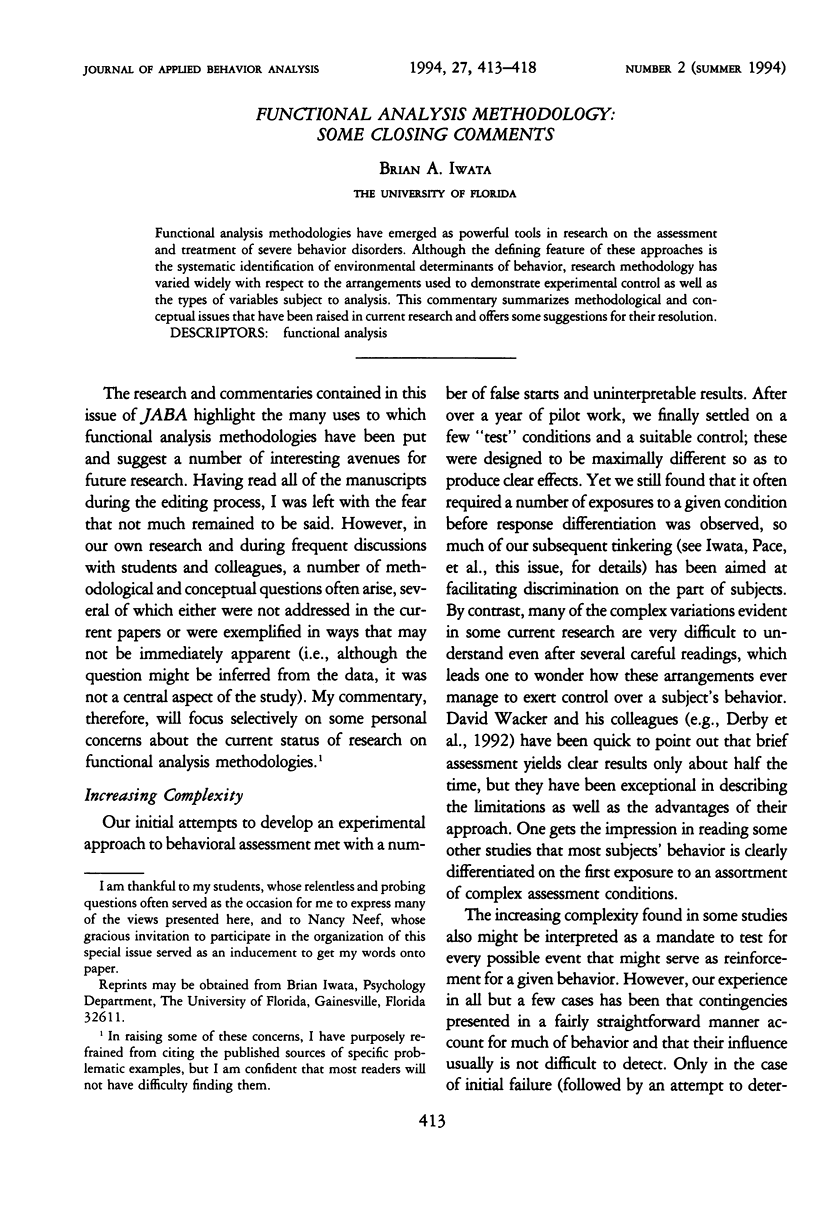
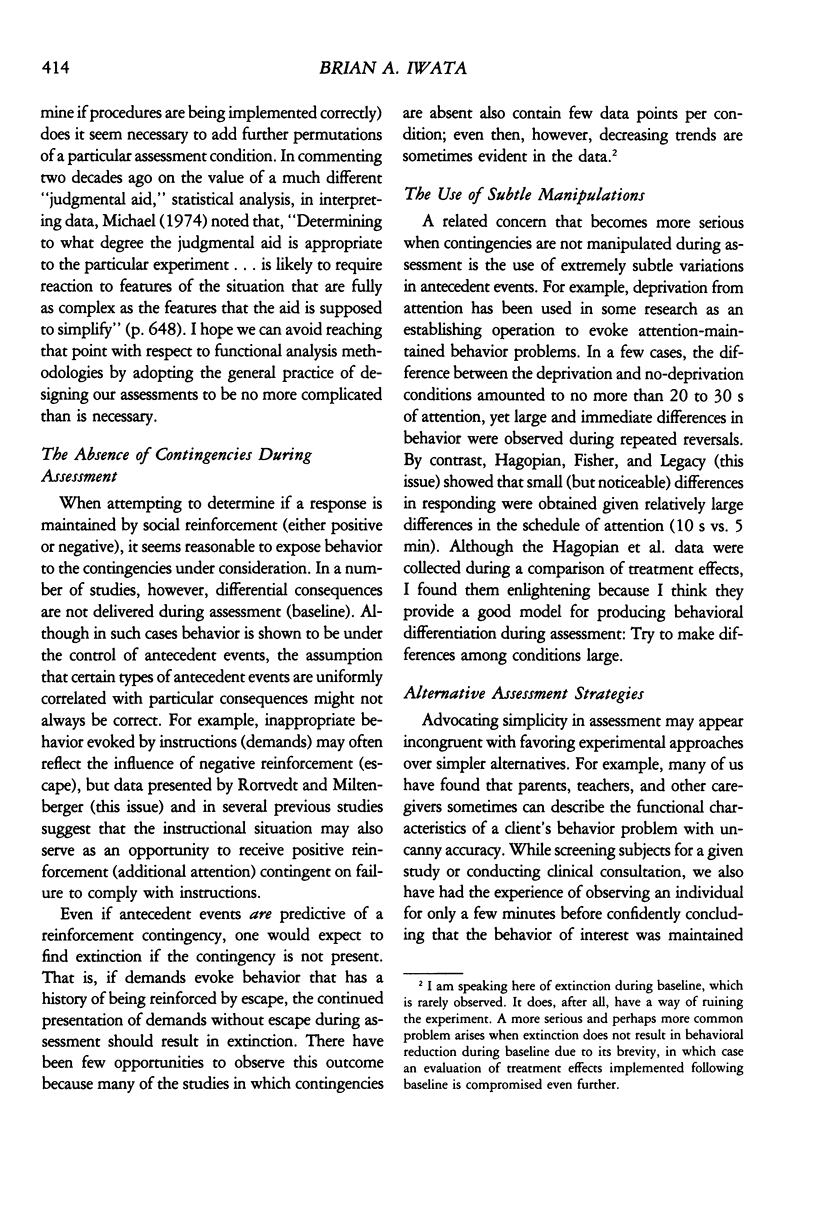
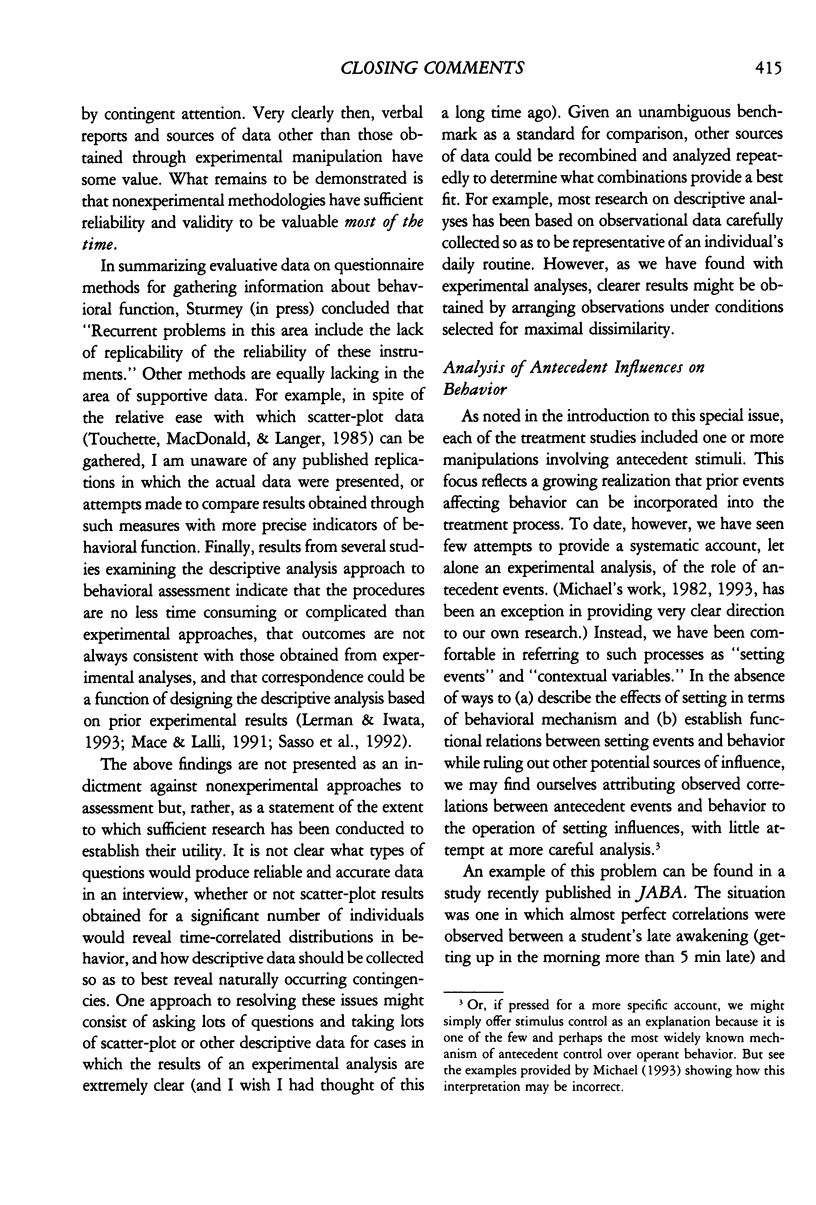
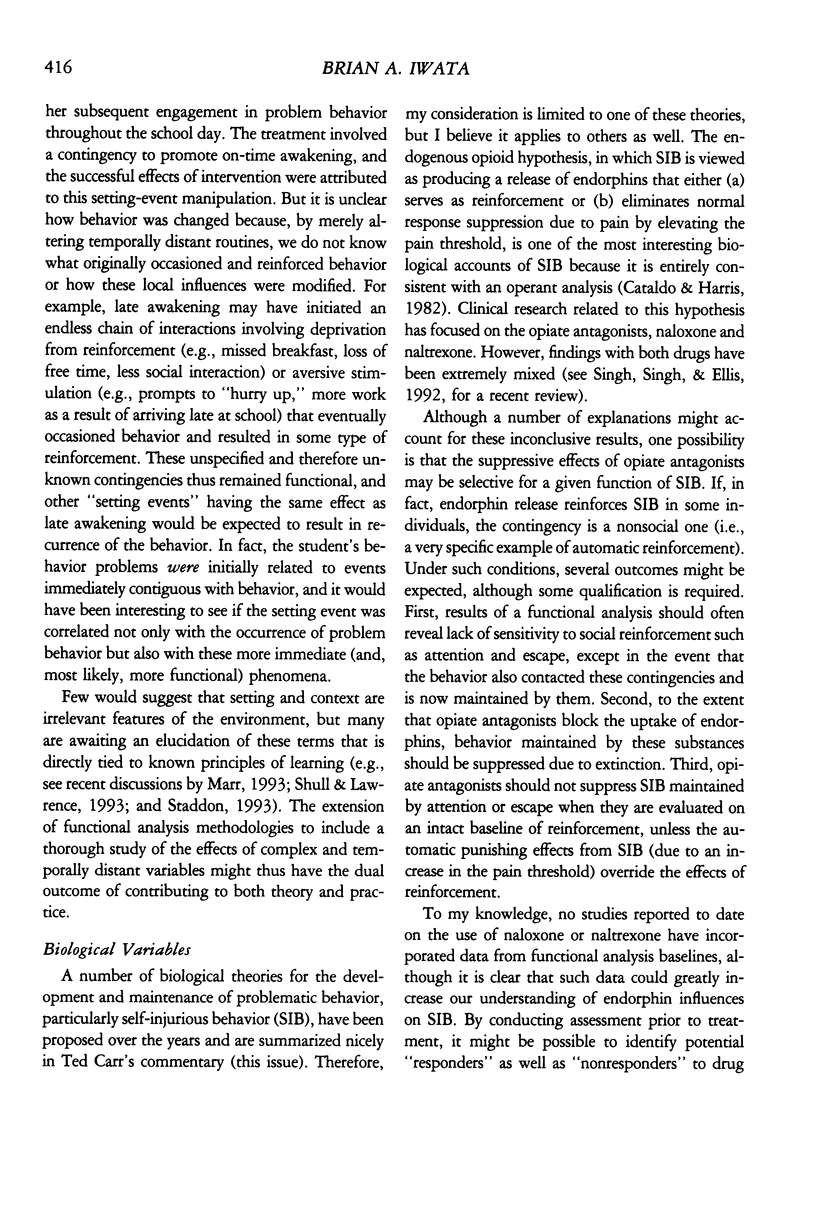
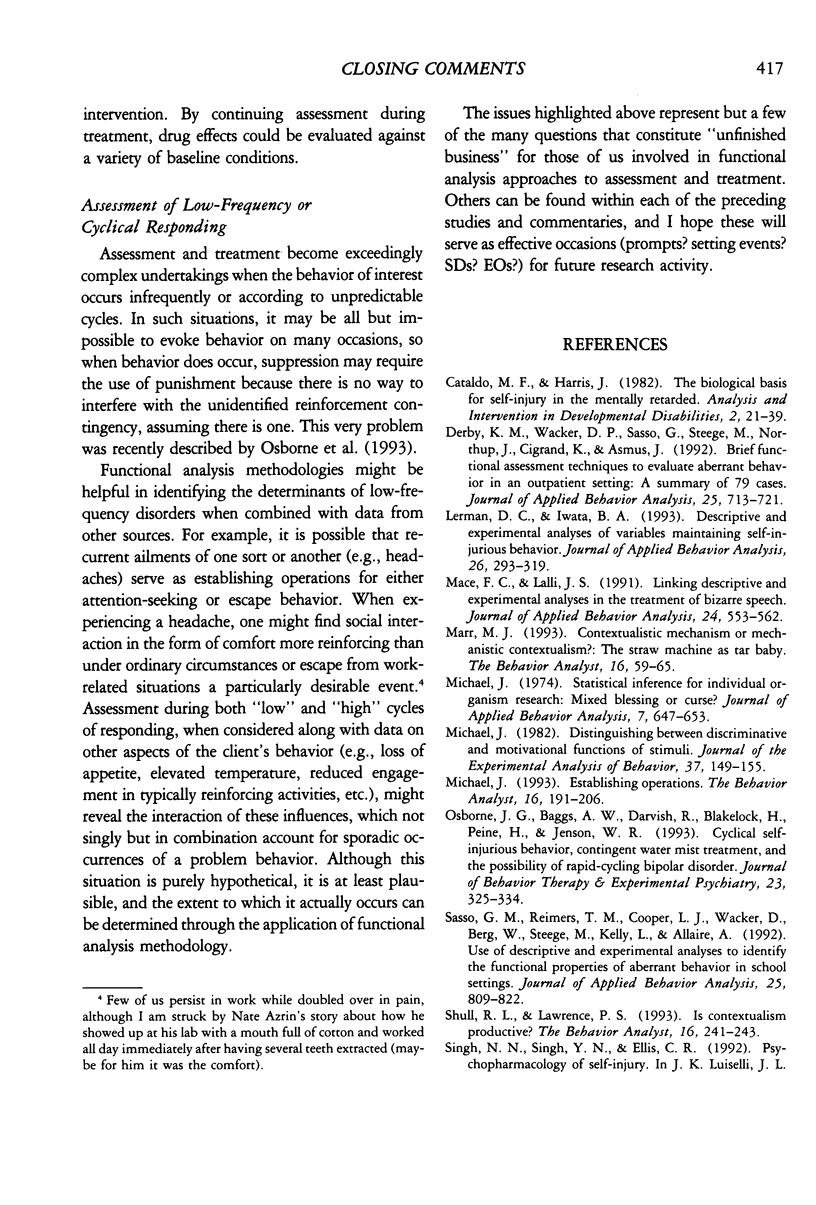
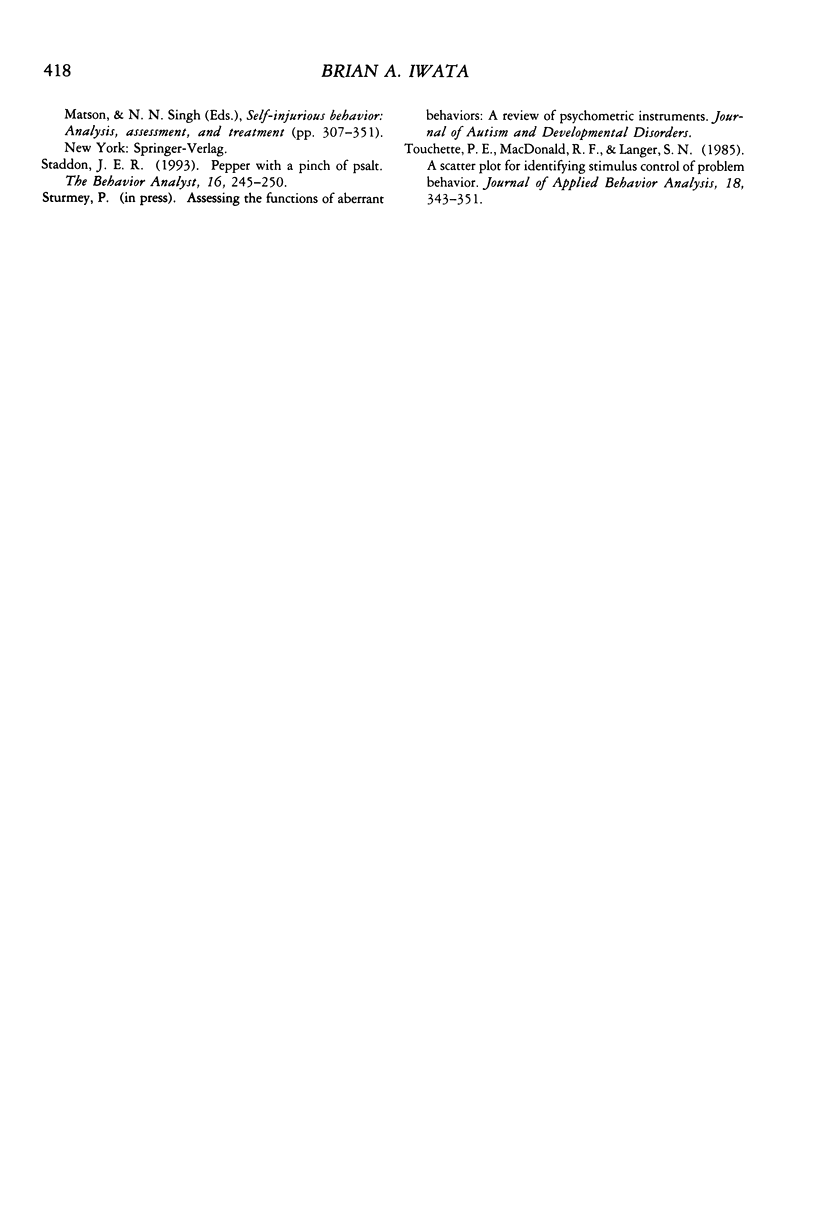
Selected References
These references are in PubMed. This may not be the complete list of references from this article.
- Derby K. M., Wacker D. P., Sasso G., Steege M., Northup J., Cigrand K., Asmus J. Brief functional assessment techniques to evaluate aberrant behavior in an outpatient setting: a summary of 79 cases. J Appl Behav Anal. 1992 Fall;25(3):713–721. doi: 10.1901/jaba.1992.25-713. [DOI] [PMC free article] [PubMed] [Google Scholar]
- Lerman D. C., Iwata B. A. Descriptive and experimental analyses of variables maintaining self-injurious behavior. J Appl Behav Anal. 1993 Fall;26(3):293–319. doi: 10.1901/jaba.1993.26-293. [DOI] [PMC free article] [PubMed] [Google Scholar]
- Mace F. C., Lalli J. S. Linking descriptive and experimental analyses in the treatment of bizarre speech. J Appl Behav Anal. 1991 Fall;24(3):553–562. doi: 10.1901/jaba.1991.24-553. [DOI] [PMC free article] [PubMed] [Google Scholar]
- Michael J. Distinguishing between discriminative and motivational functions of stimuli. J Exp Anal Behav. 1982 Jan;37(1):149–155. doi: 10.1901/jeab.1982.37-149. [DOI] [PMC free article] [PubMed] [Google Scholar]
- Michael J. Statistical inference for individual organism research: mixed blessing or curse? J Appl Behav Anal. 1974 Winter;7(4):647–653. doi: 10.1901/jaba.1974.7-647. [DOI] [PMC free article] [PubMed] [Google Scholar]
- Osborne J. G., Baggs A. W., Darvish R., Blakelock H., Peine H., Jenson W. R. Cyclical self-injurious behavior, contingent water mist treatment, and the possibility of rapid-cycling bipolar disorder. J Behav Ther Exp Psychiatry. 1992 Dec;23(4):325–334. doi: 10.1016/0005-7916(92)90056-o. [DOI] [PubMed] [Google Scholar]
- Sasso G. M., Reimers T. M., Cooper L. J., Wacker D., Berg W., Steege M., Kelly L., Allaire A. Use of descriptive and experimental analyses to identify the functional properties of aberrant behavior in school settings. J Appl Behav Anal. 1992 Winter;25(4):809–821. doi: 10.1901/jaba.1992.25-809. [DOI] [PMC free article] [PubMed] [Google Scholar]
- Touchette P. E., MacDonald R. F., Langer S. N. A scatter plot for identifying stimulus control of problem behavior. J Appl Behav Anal. 1985 Winter;18(4):343–351. doi: 10.1901/jaba.1985.18-343. [DOI] [PMC free article] [PubMed] [Google Scholar]


